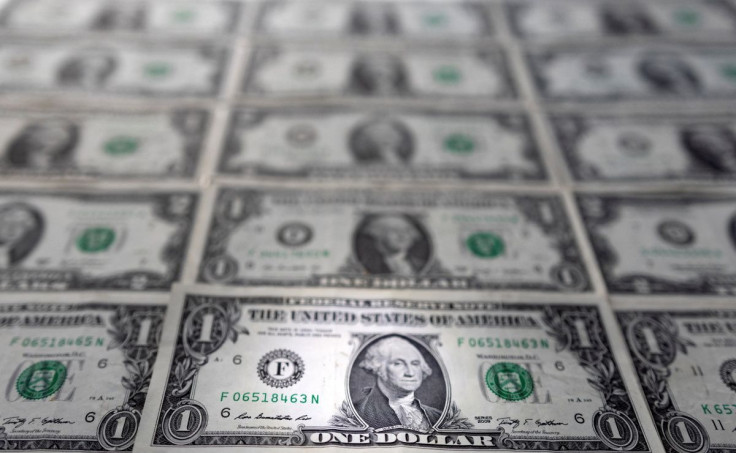Dollar Steadies Ahead Of Data, Yuan Rises In Low Volume

The dollar was little changed on Friday, even as risk appetite picked up ahead of U.S. jobs data.
European shares were mostly higher as investors waited for data which could provide hints on the pace of the Federal Reserve's policy tightening in the second half of 2022.
The ADP National Employment Report showed U.S. payrolls rising at a slower-than-expected pace last month.
Trading on Friday is quieter with markets in China, Hong Kong and the UK closed for public holidays.
The dollar was flat at 101.81 against a basket of major currencies, along with the euro at $1.0743.
Investors have mixed views on the greenback, which is still close to its highest level in almost 10 years.
George Saravelos, global head of forex research at Deutsche Bank, said the dollar is "pricing a safe-haven risk premium that is so extreme it rarely has persisted over time and is now in the process of unwinding".
Bullish analysts argue that the Fed's tightening cycle is based on a sturdier growth story than Europe's, especially after the Russian oil embargo, which might hurt the economy of the euro area.
The European Union has agreed an embargo on Russian crude oil imports that will take effect by year-end.
"The USD recovery on the back of new hawkish signals from the Fed is lacking momentum, with the dollar index having difficulty holding the 102 handle again," Unicredit analysts said in a research note.
They pointed to Federal Reserve Vice Chair Lael Brainard's comments on Thursday that it was "very hard" to see the case for a September pause in raising rates, which failed to support the dollar.
Minutes of the Fed's May meeting suggested the central bank could pause its tightening once the policy rate is back to its neutral level.
The Chinese offshore yuan rose 0.4% versus the dollar in low volumes to hit a one-month high at 6.6321, after recent positive signals for a domestic economy battered by COVID restrictions.
The yuan hit its lowest since September 2020 at 6.83 against the greenback in mid-May.
"We are positive about the yuan as recent PMI data was better than expected despite Covid restrictions," Roman Ziruk, Market Analyst di Ebury said. "We think China's economy is headed for more robust growth in the second half of the year."
PMI data showed factory activity contracting at a slower pace in May and Beijing authorities rolled out measures to support the city's economy.
Meanwhile, the Swiss franc is around levels hit in mid-May after Swiss National Bank president Thomas Jordan signalled the central bank might act if inflation pressures continue.
The SNB has so far stuck to its ultra-loose policy but Swiss prices increased to their highest level in nearly 14 years in May.
The yen was not far off its 10-year low versus the greenback at around 130 as the Bank of Japan (BoJ) stuck to its super-low interest rate policy stance.
BoJ Governor Haruhiko Kuroda said on Friday it was undesirable for prices to rise too much when household income growth remains weak.
The Canadian dollar was flat at 1.2571 versus the greenback after jumping the day before as the Bank of Canada opened the door to a more aggressive tightening.
© Copyright Thomson Reuters 2024. All rights reserved.





















